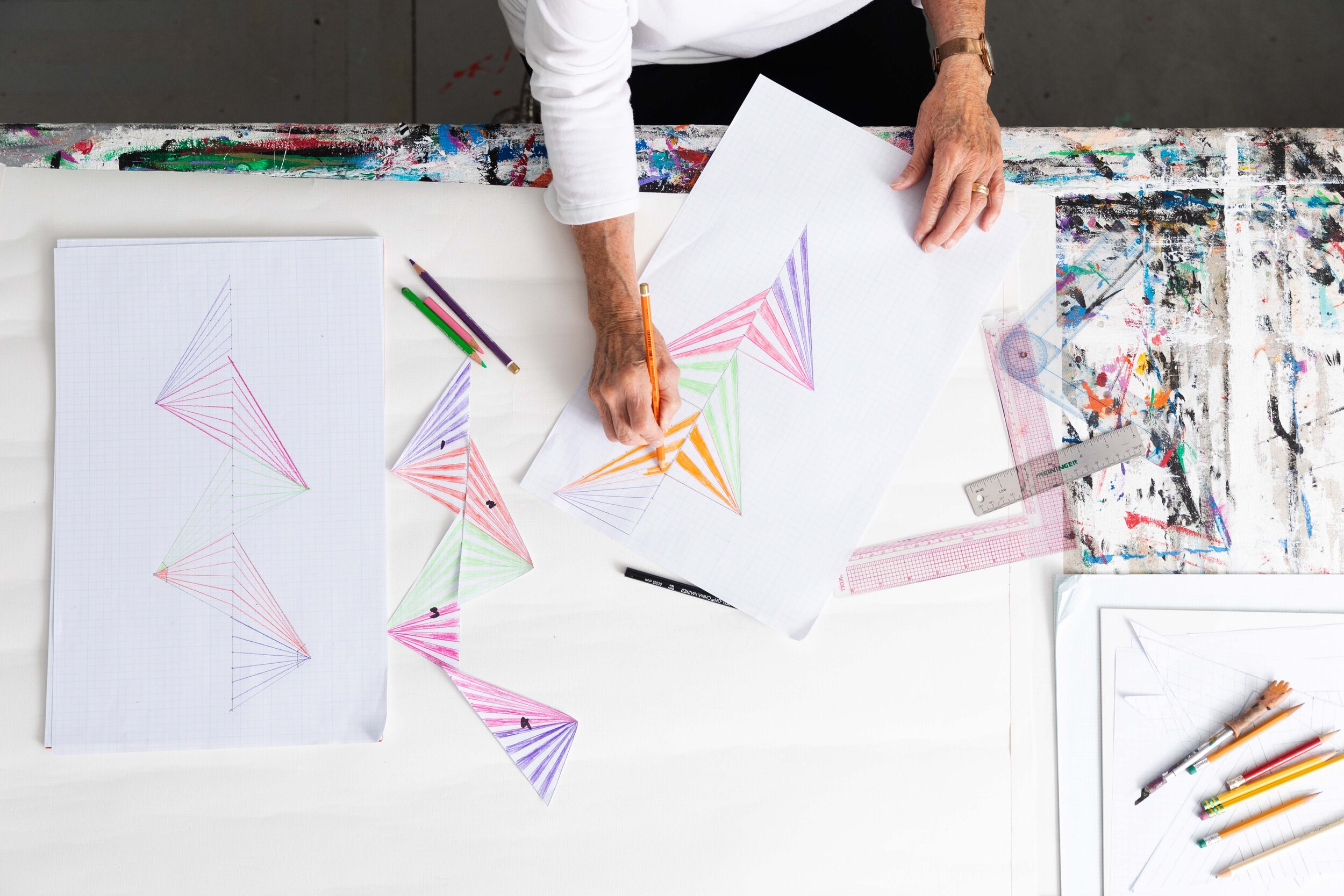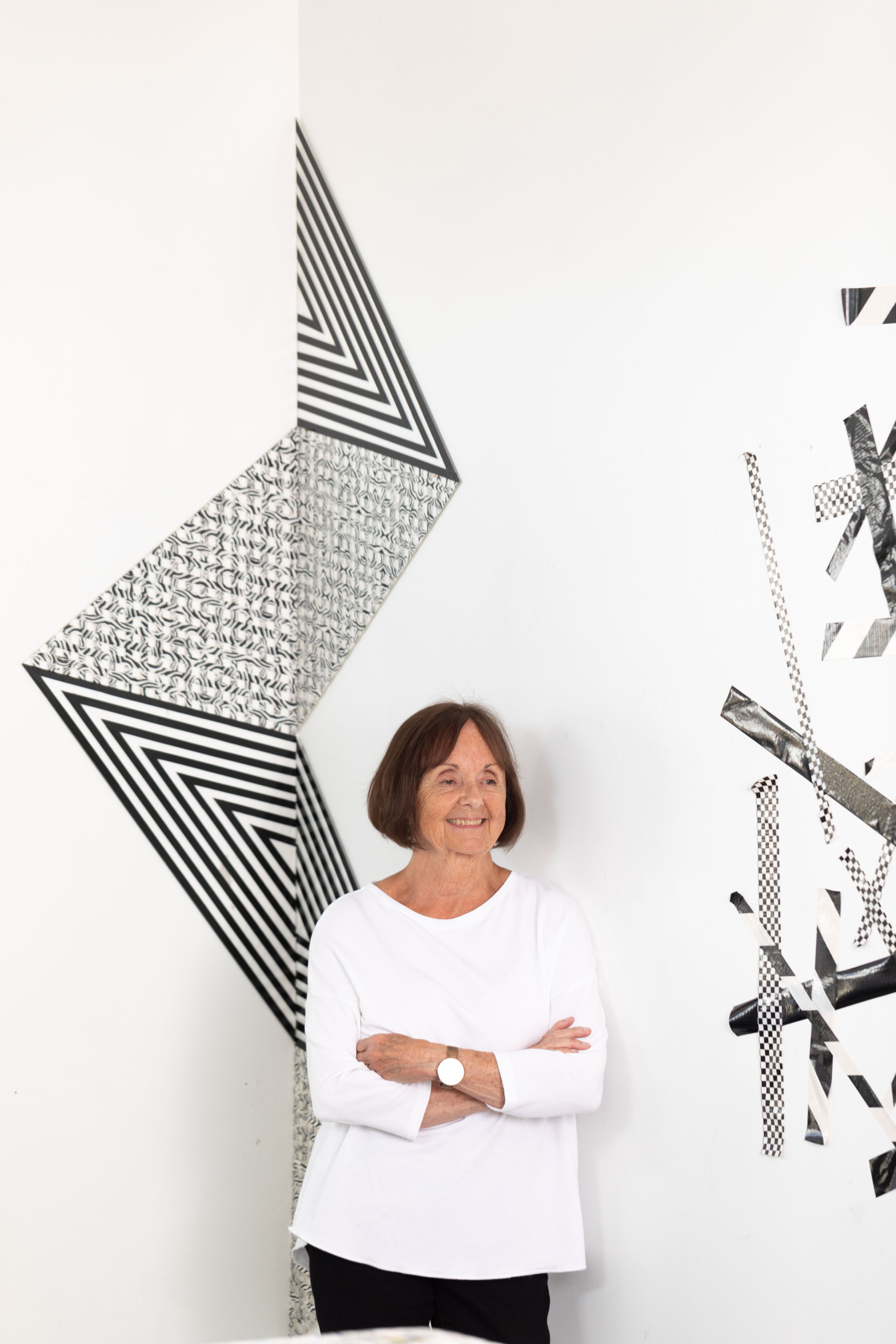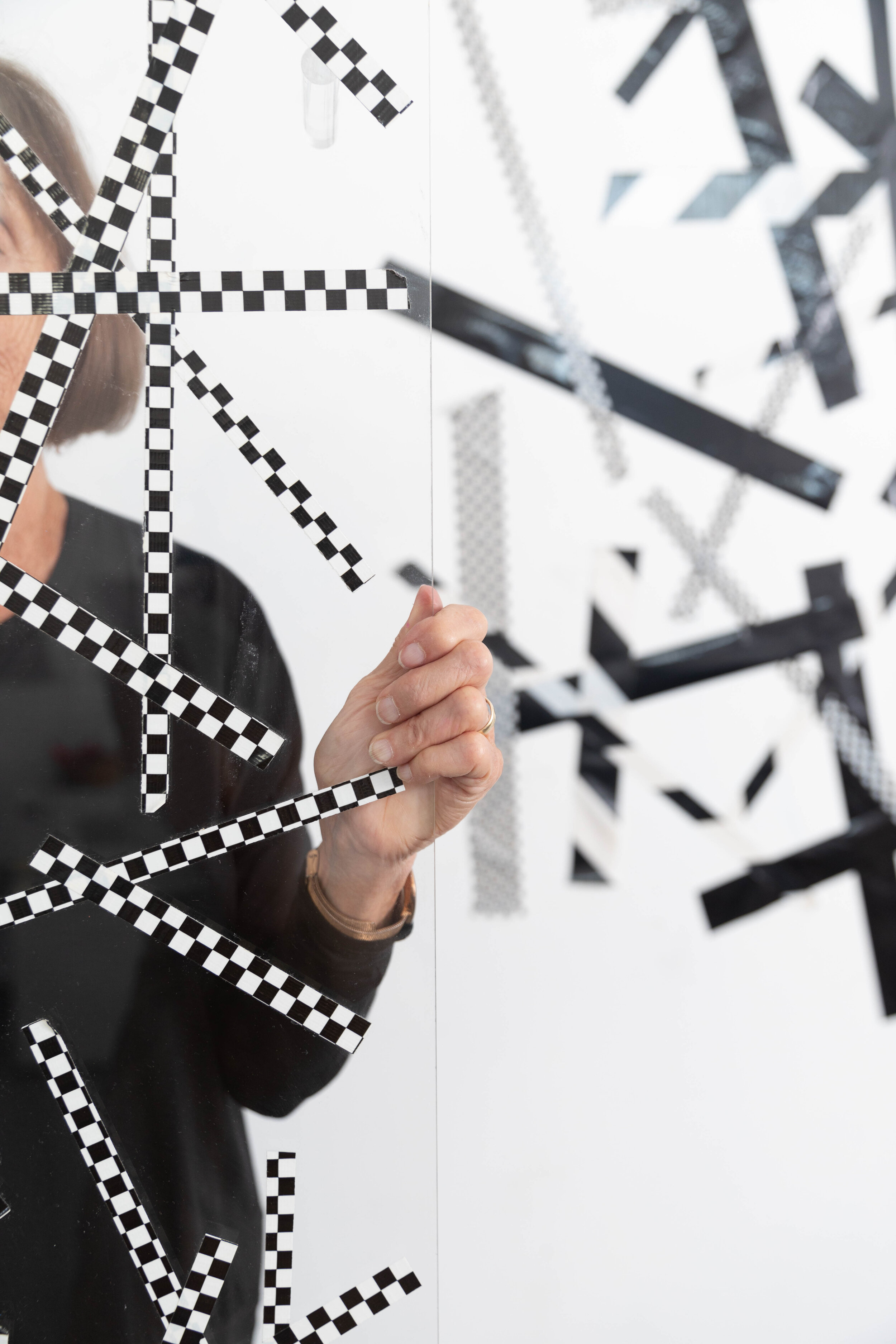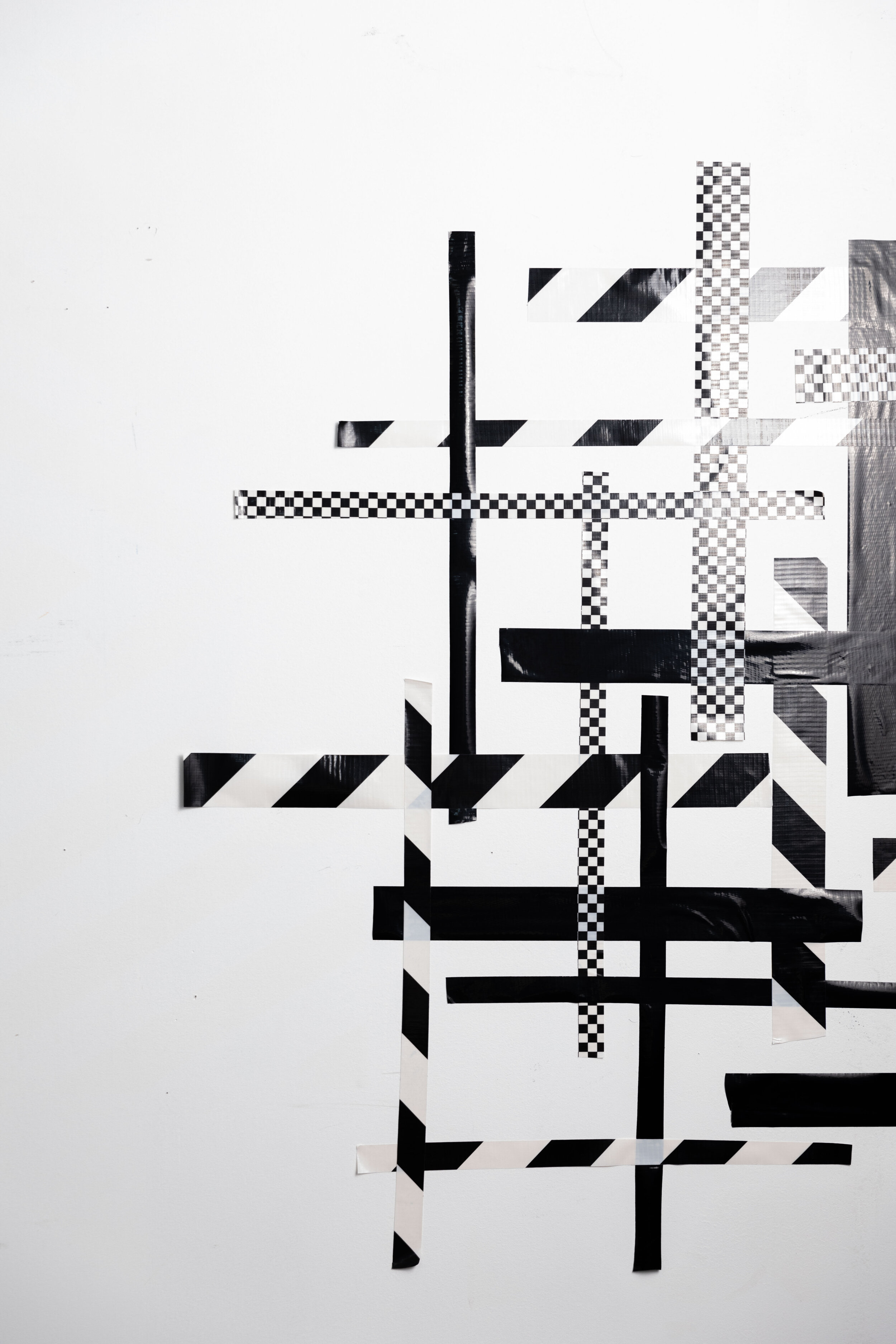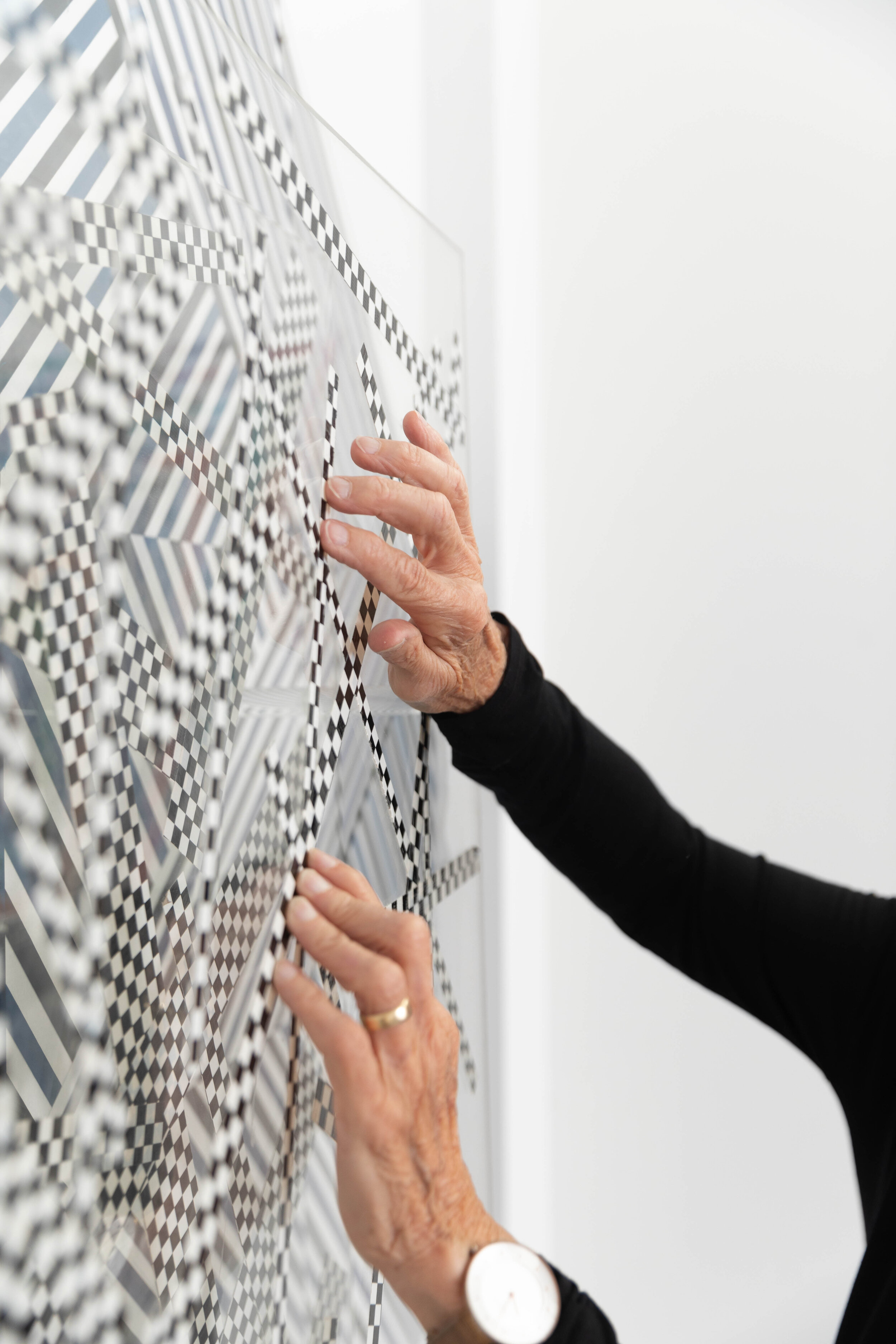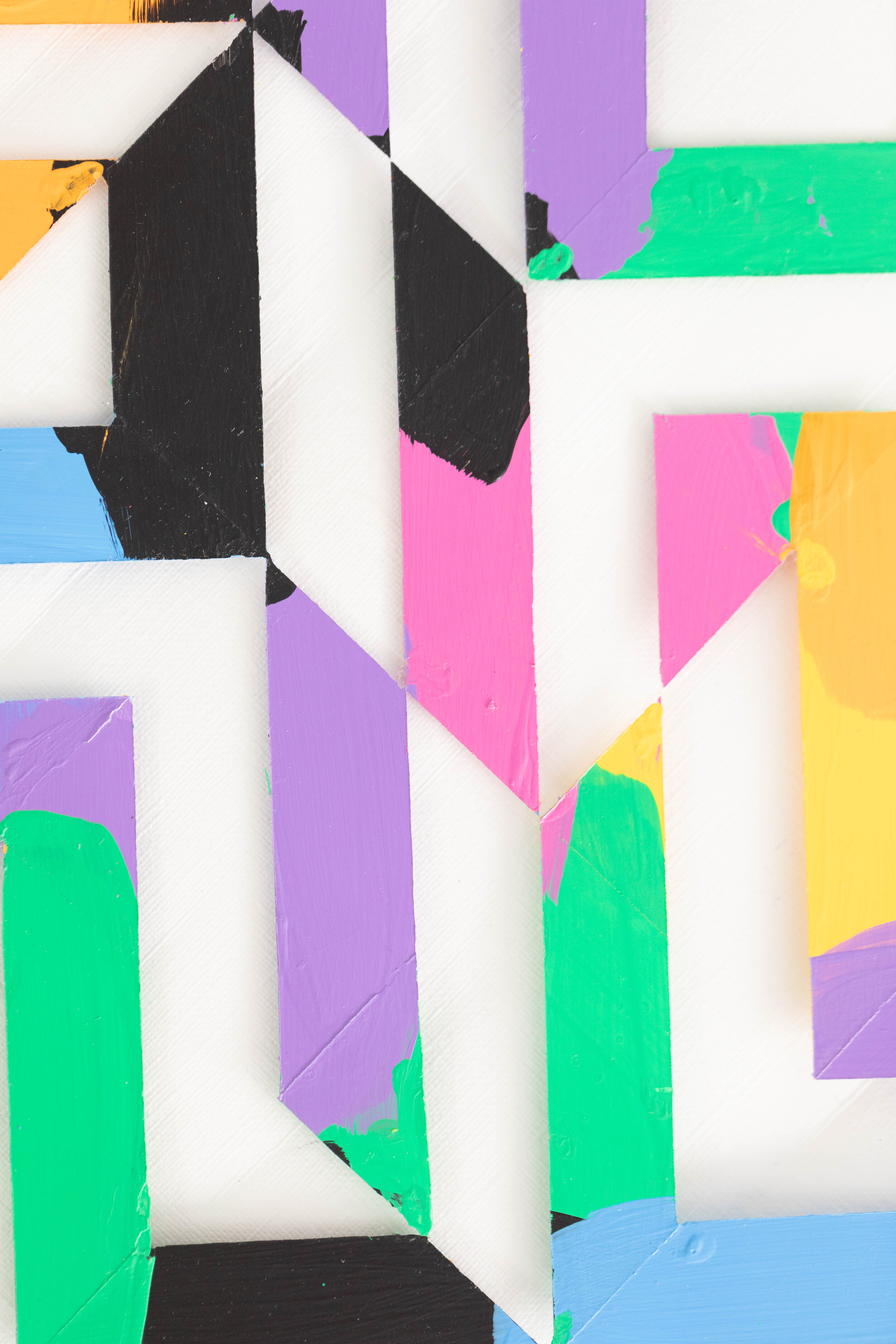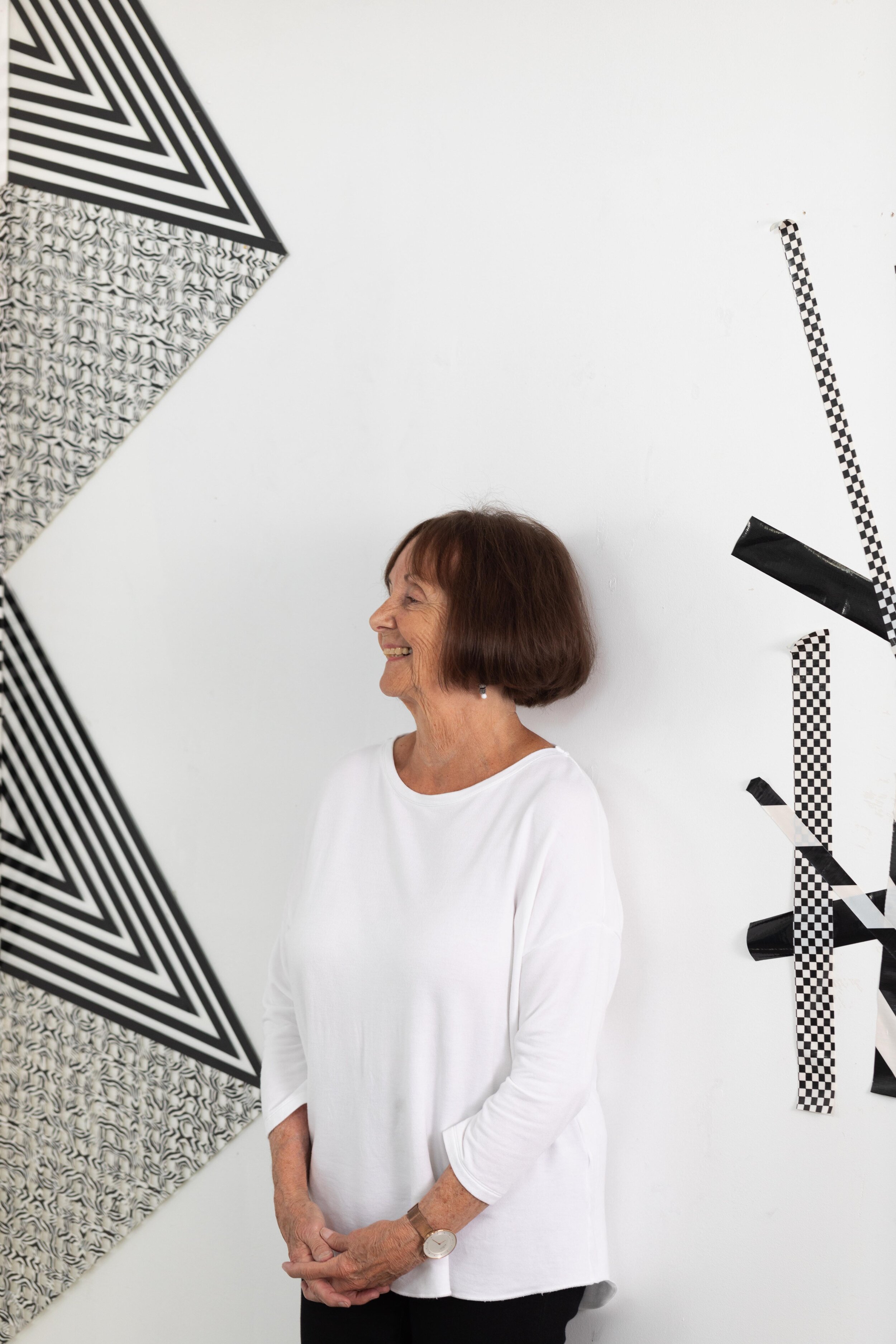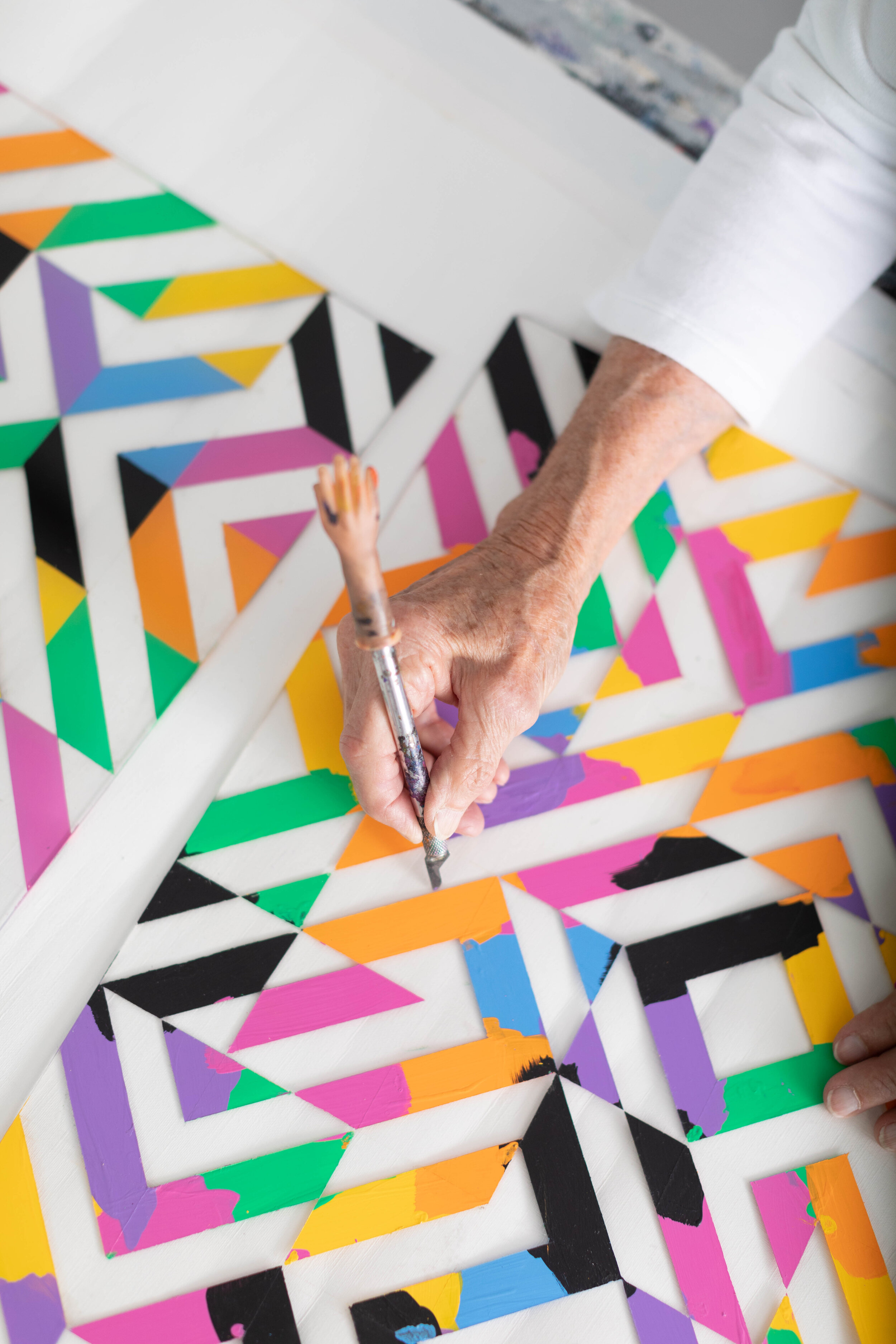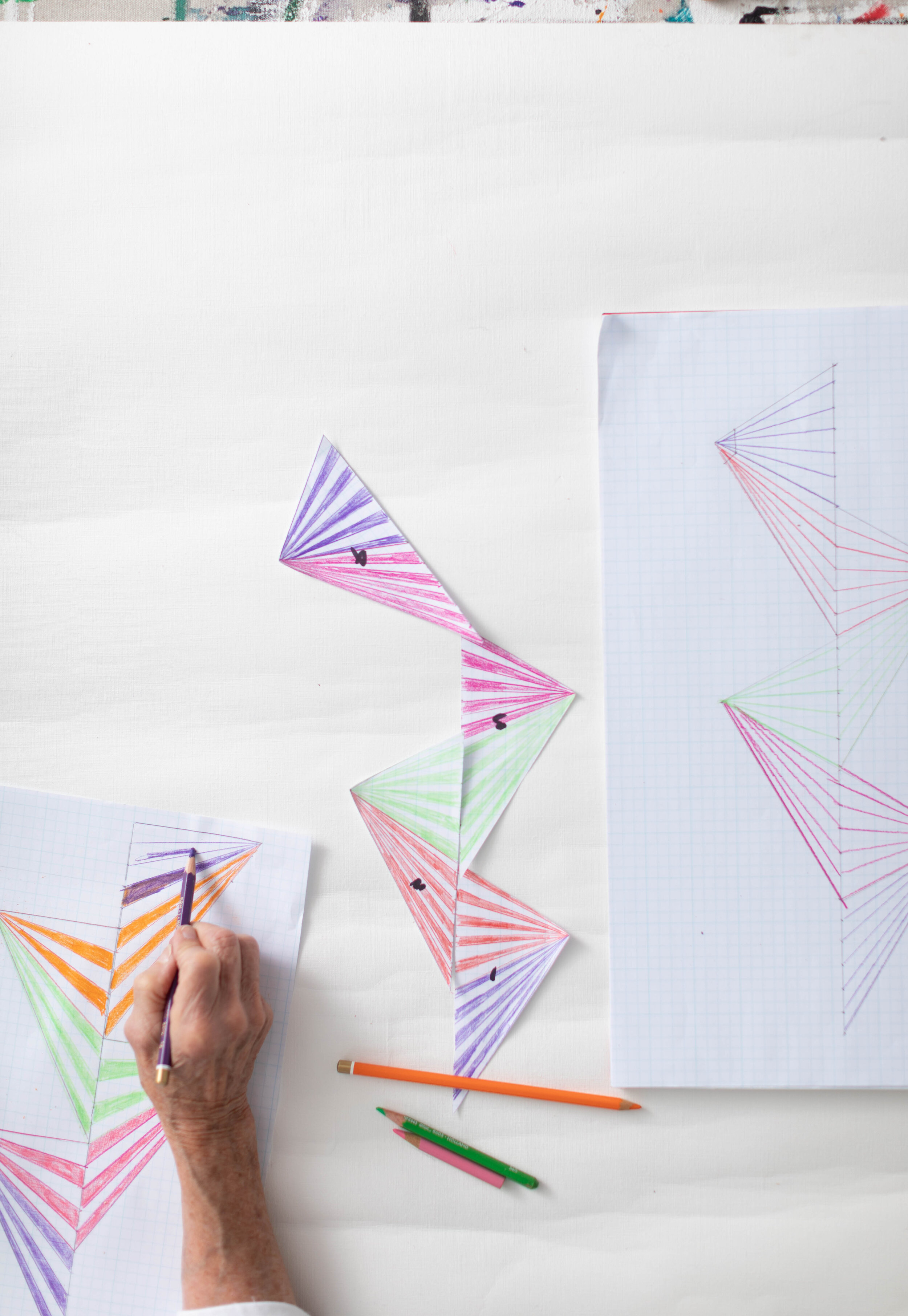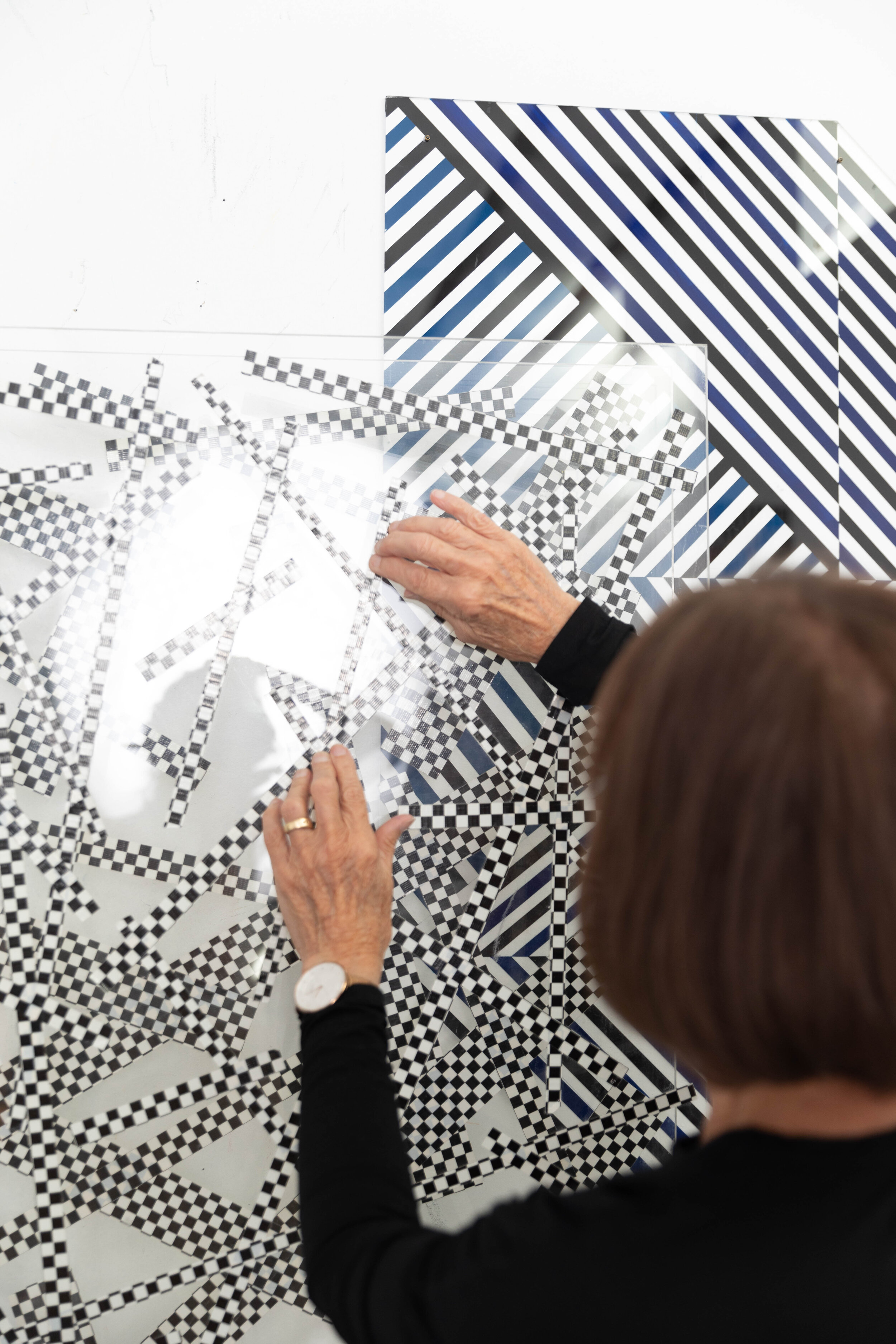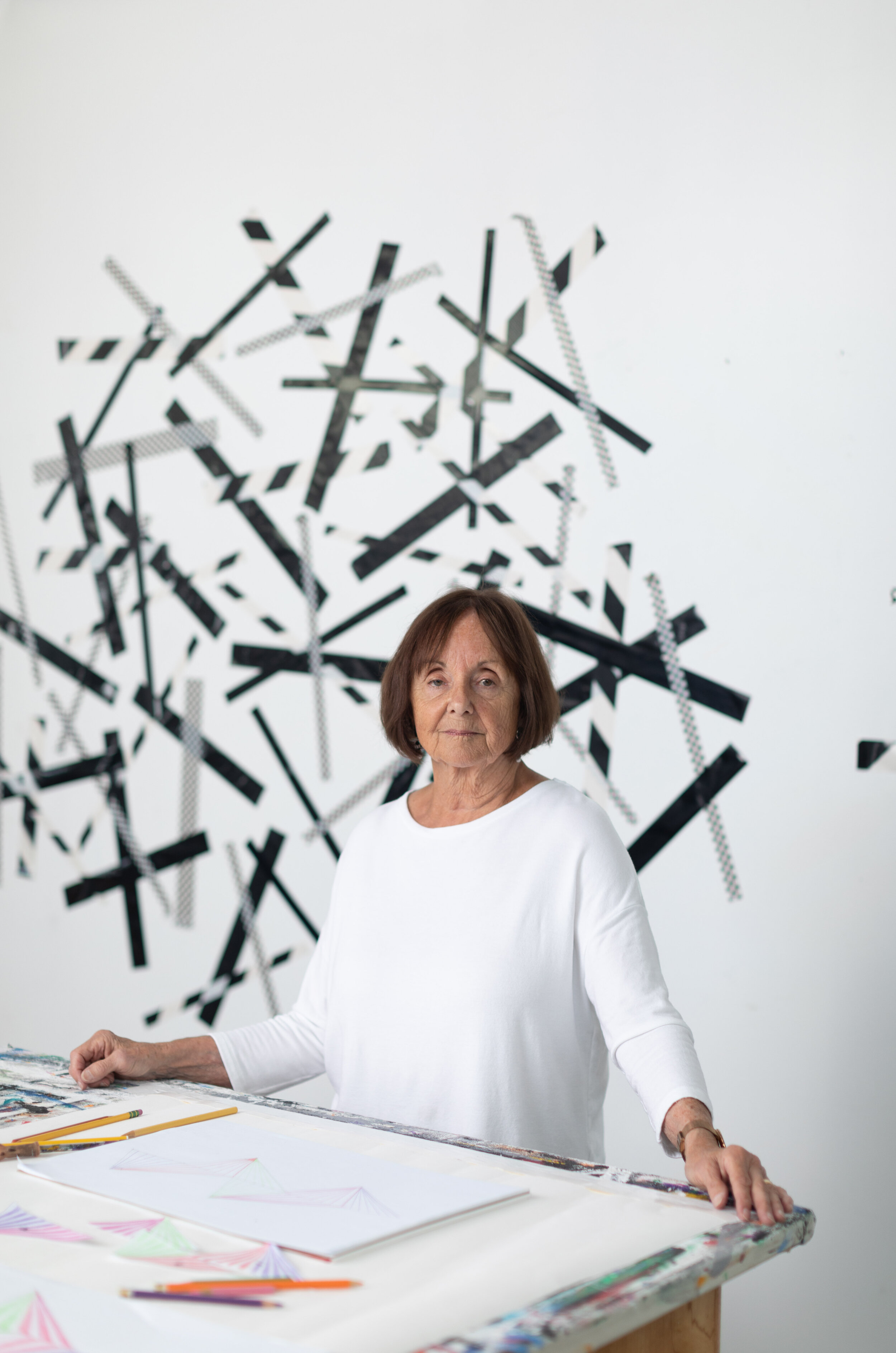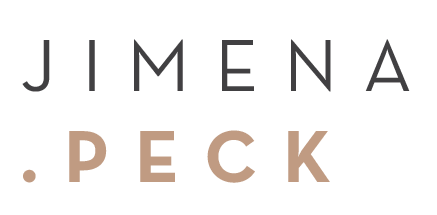Denver artist Annalee Schorr tricks your eye. Meeting her in her studio is a kaleidoscopic experience, brilliant colors whipped into shape by tight, controlled patterns — order from near-chaos. These are my favorite spaces to photographs and when called for an assignment for Luxe Magazine I felt grateful for the opportunity.
The creator of these exuberant works is surprisingly unassuming herself. Garbed in head-to-toe black, she leads me through the studio, explaining the nuances of her process. After years of experimenting with different methods, Schorr developed a unique style, often slicing off the top protective layer of her materials, painting the plexiglass beneath or even leaving it bare, brilliantly transparent.
I found Schorr’s materials — from classic brushes to plexiglass — especially fascinating. The process of “making,” whether you’re creating a photograph, artisanry, or a painting, has always interested me. Schorr is deeply passionate about sourcing diverse materials to create her works, transforming plastic, metal, paint, even duct tape into hypnotic op-art. This mixed-media mishmash results in densely textured pieces that play with light and shadow, pattern and translucence.
See more of Luxe Magazine HERE
Full Article HERE
Meet the artist HERE
Full article written by Monique Mchintoch for Luxe Magazine
Peek into the Denver-based studio of Annalee Schorr, and you’ll find more than standard paints and brushes. The artist enjoys extracting unexpected poetry from basic hardware store staples—think silvery aluminum sheets, mirrored Mylar, crystal-clear plexiglass and duct tape (which she collects in every color and pattern available). “I’m always looking for something that people don’t consider beautiful enough to make art,” confesses the artist.
From these humble supplies, Schorr builds complex geometry with hard-edge lines and dramatic splashes of color. “I’m very interested in structure, and how things are put together,” she explains. “It’s a way of making order out of chaos.”
The artist went beyond the canvas early on, starting with her kaleidoscopic-like plexiglass paintings. Though Schorr still makes works on more conventional surfaces like paper, plexiglass allows her to create many shapes to paint on, from razor-sharp parallelograms to staggered shards that wrap around corners.
“I just happened to buy some plexiglass to use for framing,” recalls the artist about her first serendipitous experiments with the material. “It comes with a brown paper protective backing that you can peel off. So I started drawing on the paper and cutting out lines with an X-Acto knife.” She then builds her patterns color by color, peeling away segments of paper and filling each exposed section with acrylic paint. “The back of the painting ends up looking pretty sloppy,” says Schorr. “But the front is all precision.”
Some portions of plexiglass remain untouched. These transparent moments contrast with her vivid palette, from graphic black and white to Technicolor hues. “I think about weaving the colors together as I’m creating a piece,” says Schorr about this process. “Certain colors vibrate against each other, adding to the pattern’s optical illusion.”
For her larger installations, Schorr discovered duct tape is the perfect medium to translate this optical energy into a 3D space. She has filled entire rooms with glossy stripes of tape in her popular shows at Spark Gallery (an artists’ cooperative she’s been a part of since 1985).
The gallery will host the artist’s latest solo exhibition in January, where she continues her experiments transforming unusual objects into mind-bending visual feats. Over the decades, this search for beauty lurking among the mundane still drives her art practice, says Schorr. “I always want to get the viewer’s attention and make them see things in a different light.”
Schorr poses in her studio (this page), surrounded by her works on paper and acrylic and duct tape installations. A sliced image of John McCain (opposite, left) offers a new perspective on portraiture. The artist carefully cuts away sections of the protective coating on the back of a sheet of material (opposite, right). After exposing sections of the plexiglass, she fills them in with paint.
